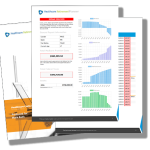It’s a beautiful Saturday early morning in Dallas. You march onto the porch, coffee in hand, and glimpse across the renowned horizon. Amidst the busy cityscape, the Reunion Tower stresses the horizon, a daily pointer of our city’s vibrant energy.
But let’s bring you back house – and more particularly, to your chimney. Your reliable hearth has actually provided convenience during cold winter nights and been the focal point for many family gatherings. However, when was the last time your chimney had an expert clean-up? If you’re scratching your head, this is the article for you.
The Hidden Necessity: Chimney Cleansing
Chimney sweeping is as essential to your house’s Health as regular maintenance is to the famous Sixth Floor Museum. Just as we wouldn’t want dust and cobwebs obscuring our view of Dallas’s abundant history, neither need to we desire creosote and soot build-up blocking our chimneys.
Creosote, a byproduct of burning wood, is a quiet hazard. When built up, it not just minimizes the efficiency of your chimney but likewise positions a fire danger — according to Fresh Air Duct Cleaning. It’s an unwanted guest, similar to the notorious Texas heat in summertime.
The Dallas Touch: A Chimney Clean for each Season
In Dallas, we experience a variety of weather condition patterns throughout the year. This suggests your chimney must be in top shape to handle whatever from the vigorous winter season chill to the damp summer heat. Regular chimney cleansing ensures that no matter the season, your fireplace is ready to provide the comfort and heat that you require.
Chimney Cleansing: A Job for the Pros
Just as you would not try to scale Reunion Tower without expert assistance (and safety equipment), chimney cleaning isn’t a DIY job. Our Dallas-based experts are well-versed in managing every kind of chimney, whether it’s gas, wood, or pellet-burning. Armed with the latest tools and market knowledge, they’ll ensure your chimney is safe, effective, and tidy, similar to the Dallas skyline we all like.
Your Chimney: A Fresh Start in Dallas
By now, you’re probably pondering over the state of your chimney, or head over to https://bestairducts.com/chimney-sweep-dallas/. Well, there’s no need to dust off your old cleaning devices or stress over spending a weekend covered in soot. Expert chimney cleaning company in Dallas are just a call away.
Keep in mind, a clean chimney not only makes sure security but also boosts your home’s general energy efficiency, conserving you a few additional dollars– in the nick of time for that trip to the Dallas Arboretum you’ve been preparing.
Wrapping it all up, let’s keep our homes as tidy and vibrant as our cherished Dallas. After all, what’s a spectacular horizon view without a cozy, clean fireplace to enjoy it by?
Provide your chimney the care it deserves– since a clean chimney indicates a delighted, healthy Dallas home.
Fresh Air Duct Cleaning
Address: 13601 Preston Rd #960, Dallas, TX 75240
Get Directions
